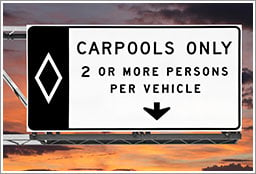 As more and more people take advantage of the rapidly increasing rideshare options like UberX, Lyft, and Sidecar, it’s important to know what coverage you have. Whether you are the driver or a passenger, you should always fully understand what your insurance policy covers and where you may be exposed.
As more and more people take advantage of the rapidly increasing rideshare options like UberX, Lyft, and Sidecar, it’s important to know what coverage you have. Whether you are the driver or a passenger, you should always fully understand what your insurance policy covers and where you may be exposed.
In general, there are three different insurance policies that may be active throughout the rideshare process:
- The Driver’s: the owner of the car and the driver of the vehicle must have a personal auto policy (PAP) provided by a personal insurance carrier
- The Company’s: the commercial auto policy (CAP) is provided by the rideshare company, officially called Transportation Network Companies (TNCs)
- The Passenger’s: if an individual has a PAP, then as passenger, the individual may have some coverage as a last line of defense
The driver’s PAP is in place until the rideshare app is turned on. As soon as the driver logs into UberX or Lyft, then all coverages provided by their PAP cease. It is also important to note that the CAP does not begin to provide any coverage or full coverage until a match has been made on the app. During this time, there is a gap in adequate coverage for the driver. (Click here for additional details on this gap).
As soon as the match is made, the CAP provided by the rideshare company begins. Most CAP policies carry liability limits of $1 million, though this is not guaranteed. Physical damage coverage (Collision and OTC) is available if the driver has the coverage on their PAP. These high liability limits could prove to be a source of comfort if the rideshare driver is involved in an accident while picking up or transporting a passenger. However, if the rideshare driver is at fault, and the passengers are injured, it is not as clear how much coverage is available for Med Pay for those passengers.
Fortunately, if the passengers have their own PAP, the Med Pay coverage will follow them into the rideshare vehicle. Unfortunately, while there will be some coverage to pay for medical expenses, the Med Pay limits are usually in the thousands while the injuries can cost tens of thousands of dollars.
As you can see, insurance for ridesharing can be complex. If you have any questions about your coverage as a passenger or the driver, please contact a Personal Lines knowledge broker at R&R. We can walk you through the process and assist with any questions you may have.

